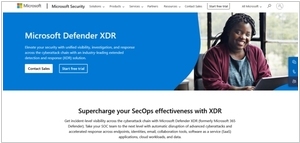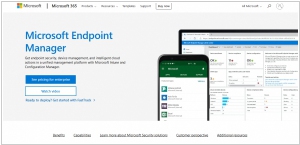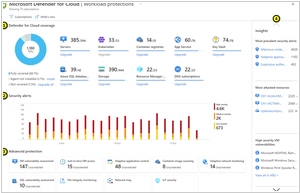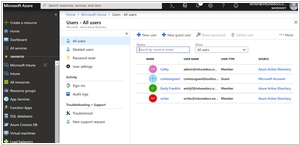Microsoft Defender for Cloud vs Microsoft Intune
August 23, 2023 | Author: Michael Stromann
Microsoft Defender for Cloud and Microsoft Intune are two distinct solutions within the Microsoft ecosystem, each focusing on different aspects of security and device management. Microsoft Defender for Cloud, also known as Microsoft Defender for Endpoint, is a comprehensive cybersecurity platform that provides advanced threat protection, detection, and response capabilities across endpoints. It offers features like endpoint detection and response (EDR), advanced threat analytics, and real-time security insights to safeguard devices from a wide range of threats. On the other hand, Microsoft Intune is a cloud-based endpoint management solution that focuses on device management, application deployment, and security policies for a variety of device types, including Windows, macOS, Android, and iOS. It offers tools for managing devices, applications, and data within the Microsoft 365 ecosystem.
See also: Top 10 MDM software
See also: Top 10 MDM software
Microsoft Defender for Cloud vs Microsoft Intune in our news:
2023. Microsoft 365 Defender is becoming Microsoft Defender XDR

Microsoft has integrated cloud workload alerts, signals, and asset information from Microsoft Defender Cloud into Microsoft 365 Defender - it's cloud-based service designed to help protect on-premise, cloud and hybrid environments. This integration now removes any infrastructure blind spots in an organization’s digital landscape. As part of this integration, the company is rolling out new correlations and content tailored to cross-workload correlations and cloud-specific content, giving you a richer, more contextual understanding of the threats, your organization faces. In the Defender portal, SOC analysts can now run end-to-end investigations if they’re faced with this type of cyberattack. They can monitor, triage, and investigate multicloud alerts across Azure, AWS, and GCP. This end-to-end prioritization of information and alerts streamlines the investigation process and greatly improves SOC efficiency. With the incorporation of cloud signals, the company has renamed Microsoft 365 Defender to Microsoft Defender XDR to better represent its capabilities that broadly span multiplatform and multicloud assets.
2021. Microsoft is buying cybersecurity startup RiskIQ

Microsoft has announced its acquisition of RiskIQ, a cybersecurity company based in San Francisco, for a reported $500 million. RiskIQ specializes in providing organizations with threat intelligence and cloud-based software-as-a-service solutions. The company extensively analyzes the web, gathering information about websites, networks, domain name records, certificates, and WHOIS registration data. By offering customers visibility into assets, devices, and services beyond their firewall, RiskIQ enables organizations to secure their assets and reduce their vulnerability to malicious actors. Notably, RiskIQ's data played a significant role in the discovery and understanding of Magecart, a collective term for groups that inject credit card-stealing malware into vulnerable websites.
2020. Microsoft updates its Endpoint Manager with improved macOS support

Microsoft has introduced a variety of fresh enhancements to Microsoft Endpoint Manager, the company's comprehensive platform for managing and securing devices within an enterprise setting. This service, which combines the capabilities of Microsoft System Center Configuration Manager with the cloud-based tools of Intune, was launched less than a year ago. The latest updates enhance the existing framework and include enhanced support for macOS and iPad, as well as new tools for establishing connections between mobile devices and on-premises applications. Additionally, the updates introduce additional productivity tools based on the data collected by the service. Moreover, Microsoft has simplified the process for corporate IT departments to remotely provision devices for their employees.





